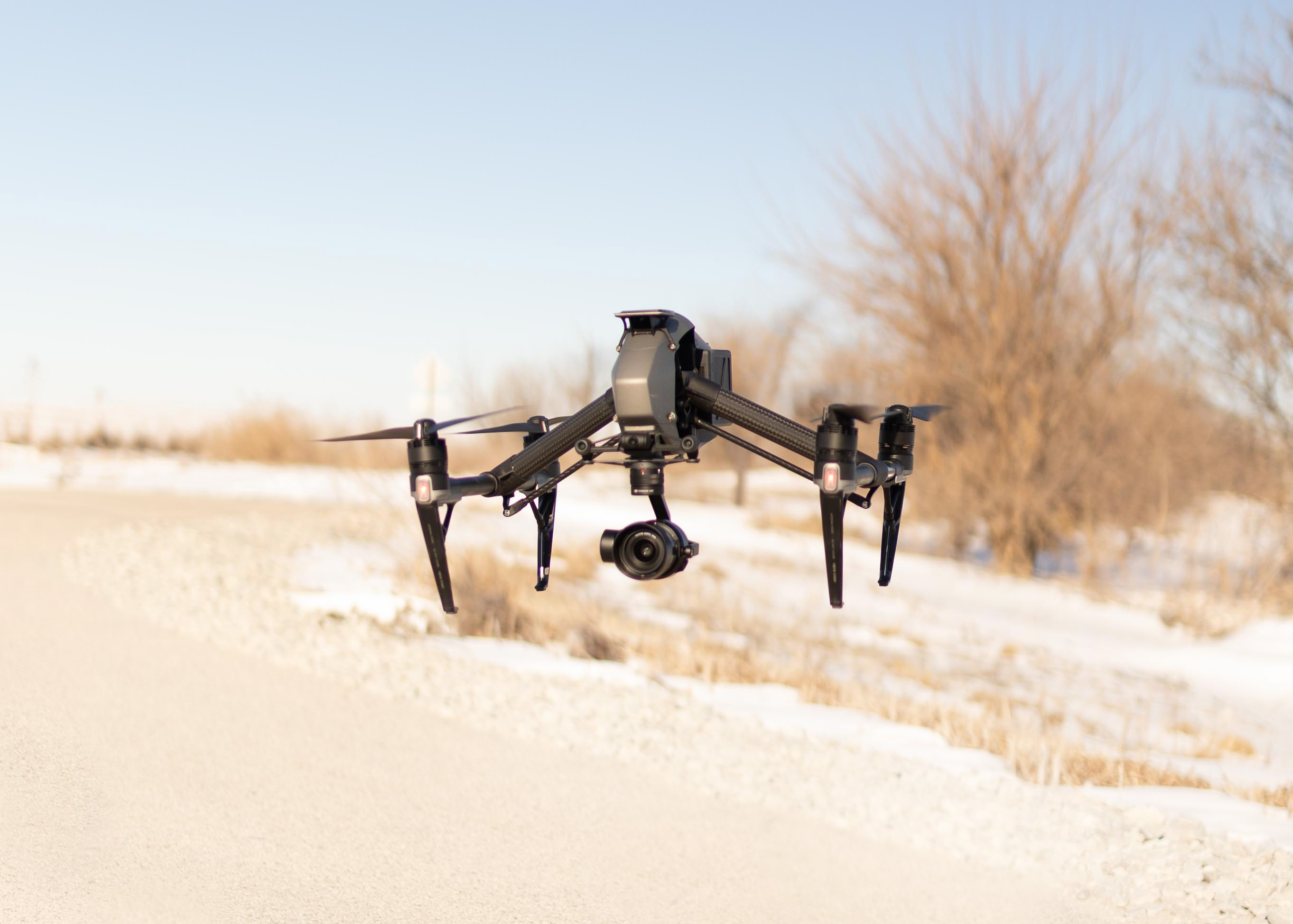
(Photo: Joclyn Bushman/Iowa Soybean Association)
ISA continues to invest in drone technology
March 15, 2022 | Kriss Nelson
ISA continues to invest in drone technology
The use of drones has been growing in popularity throughout the agricultural industry, and the Iowa Soybean Association (ISA) is no exception.
Last summer, the DJI Inspire 2, outfitted with a Sentera multispectral sensor, became a part of ISA’s fleet. The multispectral sensor captures a standard color image and near-infrared simultaneously.
Anthony Martin, ISA senior field services program manager, used the new drone last fall on a limited basis and is ready to take to the skies this spring.
“I plan on getting out for cover crop projects to capture images of growth and coverage before planting,” Martin says.
To become a drone pilot, Martin obtained his FAA Remote Pilot Certificate. He has five years of experience flying drones.
Taking drones to the fields
Drones can be used for several different activities within agriculture. The most popular and simplest are capturing aerial imagery or video.
“Drones help us get a bird’s-eye view of the field,” says Martin. “The new drones have better resolution than what is available from traditional satellite providers, and we can fly much lower than a manned aircraft to get a better look at crops.”
Advanced uses for drones include crop scouting, monitoring plant health and collecting detailed field information, including ground coverage and weed pressure.
“We are already starting to see drones being adopted for many on-farm uses,” says Martin. “Many farmers, coops and independent agronomists have their own drones used for those scouting and imagery collection activities.”
Drones are also useful in collecting plant stand counts.
“It could greatly reduce the amount of in-field time needed for this activity and also provide early season growth images for the farmers and our projects,” Martin says.
Drones can also lend a hand with in-season aerial applications of plant protection products and spreading dry products, such as cover crop seed.
“The aerial activities mean one less pass through the field from ground equipment and having a more targeted approach to chemicals or other product applications where we can treat areas that need it,” says Martin.
Kevin Prevo, ISA farmer-member from Bloomfield, participated in an ISA on-farm fungicide application trial a few years ago. Due to irregularly shaped fields, which are typical for his area in the southeastern part of the state, Prevo says they were looking for a way to apply later-season fungicides that didn’t require driving through their cornfields.
“I think utilizing drones has some potential,” Prevo says. “The technology is coming along, and I am interested as it becomes more efficient and practical to use. I think we can take advantage of drone technology on our farm.”

Looking to the future
Drones could be considered a step toward autonomous equipment as more uses are being developed, Martin says. In Canada, for example, a group called Flash Forest is setting up drones to plant trees. According to the group, using drones in this way cuts the costs and time down considerably from traditional planting methods.
Martin says investing in drone technology means ISA can collect the data without relying on others to provide these services.
“We have more control over when imagery gets taken as opposed to going through providers,” Martin explains. “To some extent, this cuts down on our imagery costs.”
An additional tool
The drone is another tool for ISA that helps generate more information and data during projects and research trials, Martin says. Drone imagery helps tell the story of what happened on individual fields throughout the growing season and how those factors influenced overall yield.
It’s a tool that farmers like Prevo welcome.
“I am always appreciative of the ISA’s research. Two years ago, we did the drone trials, and ISA was ahead of the curve,” Prevo says. “Going forward, I think using drones will become more mainstream. ISA is helping us test and verify this technology.”
Back